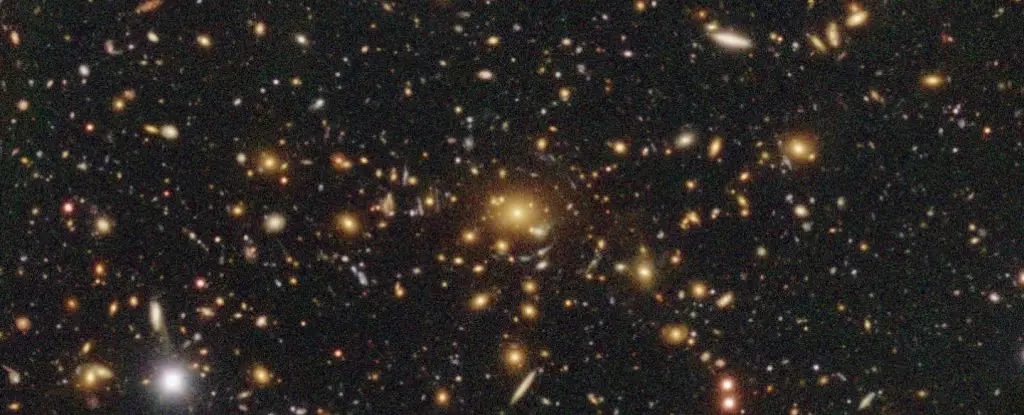The enigmatic concept of dark matter has become even more perplexing. Recent observations of the Universe have demonstrated that the distribution of this mysterious substance has evolved differently over time. Comparisons between its spread just after the Big Bang and its current distribution indicate that dark matter is now less clumpy than it was in its early stages. This revelation suggests that there may be a fundamental mistake or missing piece in our current standard cosmological model. This issue, known as the sigma-eight (S8 tension), is elaborately detailed in several research papers published in Physical Review D. While a solution is yet to be found, the mounting evidence from multiple experiments is a cause for concern among astrophysicists.
Examining Different Datasets for Dark Matter Distribution
To identify the discrepancy in the distribution of dark matter, researchers turned to different datasets that capture light from the distant Universe. The first dataset is the cosmic microwave background (CMB), which consists of faint microwave radiation that pervades the Universe. This residual emission originates from the initial glow that permeated the cosmos a few hundred thousand years after the Big Bang. The second dataset spans six years of observations collected from the Hyper Suprime-Cam (HSC) instrument mounted on the Subaru Telescope in Hawaii. By conducting a weak gravitational lensing survey using the HSC, astronomers can indirectly detect the presence of dark matter through its gravitational influence on the curvature of spacetime. These observations enable researchers to map the distribution of dark matter with remarkable precision, albeit through subtle distortions in the shape of galaxies.
The HSC instrument observed the sky for an extensive period of 330 nights spread over six years. Different teams of researchers then analyzed the data using various approaches, which eventually yielded similar values for S8 (dark matter’s clumpiness), ranging from 0.763 to 0.776. These values align with those obtained from other weak lensing surveys. However, the cosmic microwave background presents a different story, with an S8 value of 0.832. This disparity contradicts our current understanding of the Universe’s evolution according to the cosmological standard model. This model suggests that the distribution of matter should have started out relatively smooth and gradually become clumpier as galaxies and cosmic filaments formed over time. Since different instruments and analyses have consistently produced similar results, the discrepancies observed in the weak lensing surveys are unlikely to be mere errors. Researchers of the study took extensive precautions to prevent biases and went as far as blinding themselves from the data they were studying.
The scientific community is faced with multiple cosmological tensions, one of which is the Hubble tension – an unresolved discrepancy in measurements of the Universe’s expansion acceleration. The presence of such tensions raises questions about the accuracy and validity of our current cosmological modeling and our understanding of dark matter. It is possible that our measurements are flawed or that a resolution to one tension could lead to revelations regarding the others. Nonetheless, it is clear that we are overlooking something pivotal in our attempts to comprehend the evolution of the Universe. The solution to these fascinating problems lies in future advancements in instrumentation, which will enable larger surveys and even more precise measurements. Only through these endeavors will we begin to obtain the answers we seek. The research highlighting this fundamental mistake can be found in the following articles published in Physical Review D: [insert relevant links].


Leave a Reply